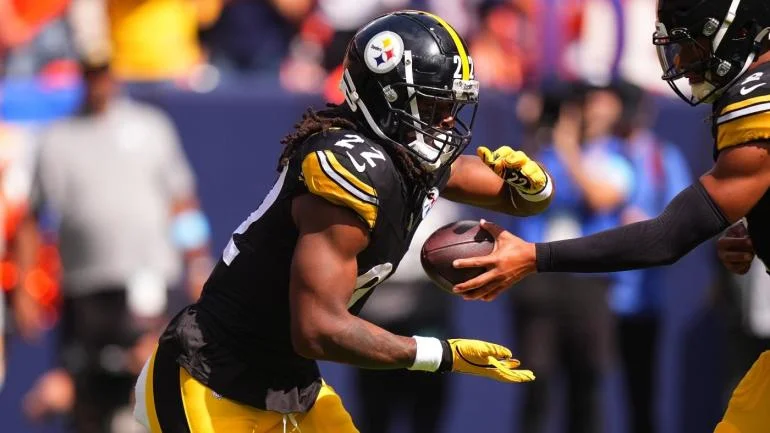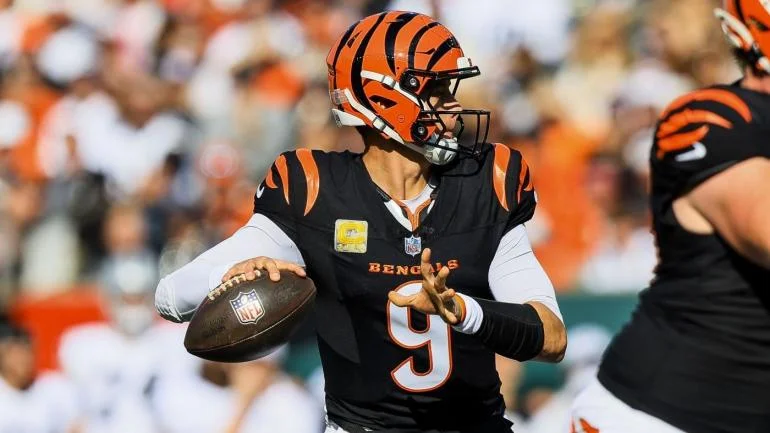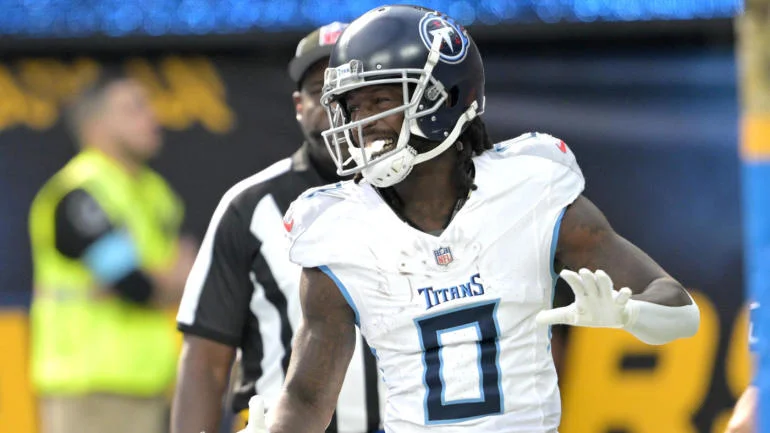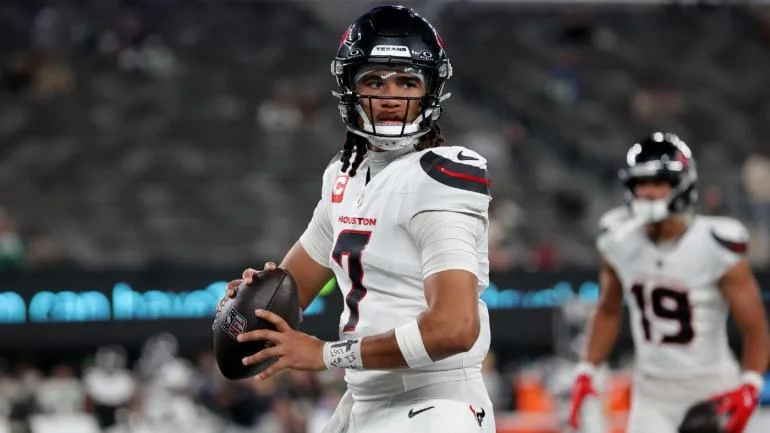We compare RG3 and Deshaun Watson.
The news that Deshaun Watson tore his ACL in practice was deflating to NFL fans across the country who’d come to appreciate him and must have been devastating for Houston Texan fans.
For Washington Redskins fans, it may have been an eerie flashback. It was only six years ago that their own star rookie Robert Griffin III — who had taken the league by storm — tore his ACL and LCL at the end of his rookie year.
Given that, I wanted to look back and study those two cases. There are similarities (more so than them being athletic black quarterbacks) but perhaps a few key differences as well.
High school careers
Robert Griffin III had an unusual upbringing for a star football prospect. Both his parents were in the military, leading him to be born in Okinawa, Japan. He moved around quite a bit as a kid. But wherever he went, he shined as a multi-sport athlete.
Griffin’s abilities in track and field can’t be understated. He broke several high school state records at Texas. He’d go on to run track at Baylor (winning the Big 12 400-meter hurdles) and even participate in the U.S. Olympic Trials. That speed — legitimate, Olympic speed — coupled with promise as a passer led him to be considered a top 50 high school recruit.
Meanwhile, Deshaun Watson had his own difficult upbringing and financial hardships that have been well-documented. Of course, he also shined on the football field. Perhaps that’s the biggest difference between the two of them in their earlier days. While Watson had good speed, he didn’t have world-class speed. Perhaps, as a result, Watson was clearly focused on football, football, football. He won his high school team’s starting job as a freshman (a trend that would continue, we’ll see). His polish as a passer allowed him to be ranked as the # 1 QB prospect in his class.
College careers
Despite dalliances in track, Robert Griffin III flashed right away at Baylor for their new coach Art Briles. He won the job as a true freshman, an unusual accomplishment for a quarterback. The team wasn’t good (4-8) but they were on the upswing. As Baylor’s program improved and started to become a powerhouse under Briles, Griffin broke out himself. As a redshirt junior, he dominated the Big 12, passing for 4293 yards (with a 72.4% completion rate), 37 TDs, 6 ints, adding in 10 rushing touchdowns for good measure. As a result, he won the Heisman Trophy.
Deshaun Watson’s college career was actually more amazing than that. Based on his resume alone, you couldn’t accomplish more than Watson did at Clemson. Like Griffin, Watson won the starting job at Clemson as a true freshman. In his sophomore year, he led the team to the title game, being named a Heisman finalist in the process. As a junior, he made another Heisman ceremony and another title game, this time winning the championship over an Alabama defense that had been praised as one of the greatest of all-time.
In terms of the negative similarities, there’s a clear one. In Griffin’s sophomore year, he tore his ACL in the team’s third game. He’d miss the rest of the season and earn a medical redshirt as a result. Watson also tore his ACL, which ended his freshman season prematurely. He ended up playing (and excelling) the following season.
The draft process
Because Robert Griffin III’s breakout junior season was new and fresh in the minds of the media and draft analysts, you could hardly find anyone to say anything negative about him. He had that world-class speed (4.4 in the 40), stellar production at Baylor, and was by all accounts a great kid and leader. His arm strength was also considered strong, illustrated by all his successful deep shots at Baylor. The Redskins traded a boatload to grab him at # 2. In fact, some evaluators even though he was a better prospect than # 1 pick Andrew Luck, a kid who had been touted as the best quarterback prospect since John Elway.
When Watson entered the draft, he was doing so under different circumstances. Originally he had been seen as a # 1 pick going into his junior year, but that shine had been starting to wear off. He’d been under the spotlight for a while now, which allowed experts to nitpick his flaws. There were questions about his arm strength and decision making, considering he threw 17 picks his final year in college. More than anything, there was concern about him being a system quarterback. The fact that Robert Griffin had failed by this point and Cal’s Air Raid QB Jared Goff struggled so badly as a rookie, didn’t help squash this argument at all. As a result, Watson fell to the # 12 pick.
In terms of the differences between the two, it’s safe to say that Robert Griffin was a better, more valued draft prospect than Watson, although that comes with the caveat of the changing times and growing backlash against both system quarterbacks and running quarterbacks.
The rookie year
As a rookie, Robert Griffin III was a revelation. Any concern that he couldn’t adapt to the NFL was put to rest; the NFL would have to adapt to him. He put up stats similar to those at Baylor — 65.6% completion, 20 TDs, only 5 interceptions, with 815 rushing yards and 7 touchdowns thrown in for good measure. The Shanahans had wisely adopted several “college” principles including the read-option, which torched an unexpected league.
Anyone who’s watched football this year or owned a fantasy team knows how well Deshaun Watson has done for Houston since he’s entered the starting lineup. His success has been less about efficiency (61.8%, still 8 interceptions) and more about gaudy totals. 21 touchdowns (19 passing, 2 rushing) in only 7 games, setting records on fire. The fact that he had so much success playing behind a mediocre line only looked more impressive.
Of course, both Griffin and Watson’s rookie seasons ended on a down note, both with torn ACLs. From what I understand about knee injuries (which is: not much), Griffin’s was the more serious of the two, as he tore both his ACL and LCL ligaments.
The differences going forward
Clearly, there are quite a few similarities between RGIII and Deshaun Watson that can’t be ignored. They’re athletic, highly productive college quarterbacks who flashed immediately in the NFL. However, they’re both quarterbacks who suffered multiple torn ACLs, one early in college and one early in their pro career.
If you’re looking for differences between the two that can lead you to an optimistic take on Deshaun Watson’s future, this would be it:
Griffin’s failure to rebound from his injury stemmed from a few factors. Primarily, clashing with the coaching staff. After the injury, the Shanahans wanted to amend the offense and make it more traditional to protect Griffin going forward. They also may have known that the read-option success wouldn’t last. The NFL defenses may catch onto it the same way they did for the “Wildcat” formation.
However, Griffin wasn’t the most “coachable” in this regard. The fact that he had the ear of the owner didn’t help matters and gave him a lot of leverage to bump back against his head coach. Griffin’s father was also a strong influence, either positive or negative depending on your point of view.
It’s completely speculative, but it appears that Watson is easy to coach. Bill O’Brien is notoriously tough on quarterbacks and his offensive scheme is notoriously tough to learn, but Watson managed to thrive anyway. There’s not as much adjustment that needs to happen with Watson or this Texans offense — all he needs is health.
The other major difference between the two can be found in the timeline of the injury. Watson suffering a torn ACL now may be a good thing — chances are, he’ll be recovered (maybe not 100%, but closer to it than not) by the start of the 2018 season. After all, he’s already been through this before. He missed half a season a freshman at Clemson with a torn ACL but was ready to go by the next year.
Griffin, meanwhile, had a more complicated injury recover history. In college, he tore his ACL early on as a sophomore (3 games) and came back strong by the next year. However, as a rookie with the Redskins, his re-injury came at the end of the year in the playoffs. That late-season injury is extremely hard to come back from so quickly, but Griffin and the Redskins tried to do exactly that. Despite not playing in any preseason games, Griffin started Week 1. And while that’s admirable for Griffin to rush back like Superman, in hindsight that may have been a big mistake. He never looked fully recovered, either physically or in terms of his confidence. His play and his relationship with the Shanahans eroded from there.
Bottom line
Anyone who claims that Robert Griffin “sucked” or “couldn’t throw” is participating in revisionist history. He was an extraordinary athlete, but also an extraordinary QB prospect. He also looked like a superstar as a rookie. I don’t think it’s ridiculous to say that most teams would have taken young Griffin over young Deshaun Watson.
But Griffin’s failures came more from how he was handled, both from an injury perspective and from a franchise/coaching perspective. Hopefully, Watson’s story becomes much different from there.




